《会计学教程与案例 英文版·第9版》
| 作者 | (美)罗伯特·N.安东尼(Robert N.Anthony) 编者 |
|---|---|
| 出版 | 沈阳:东北财经大学出版社;McGraw-Hill出版公司 |
| 参考页数 | 1044 |
| 出版时间 | 1998(求助前请核对) 目录预览 |
| ISBN号 | 7810444670 — 求助条款 |
| PDF编号 | 81930348(仅供预览,未存储实际文件) |
| 求助格式 | 扫描PDF(若分多册发行,每次仅能受理1册) |
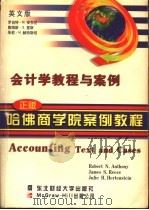
Appendix Table A Present Value of $1
ContentsPART1
Appendix Table B Present Value of $1
PART2
The Need for Information, 3
FINANCIAL ACCOUNTING1 The Nature and Purpose ofAccounting, 3
Operating Information, 5
Financial Accounting,5
Management Accounting, 6
Definition of Accounting, 7
The Profession of Accounting 8
Our Approach to Accounting, 9
Plan of the Book,10
Preconceptions aboutAccounting, 10
The Financial AccountingFramework,11
Accounting s HistoricalAntecedents,12
Nature of Principles,13
Accounting as a Language,13
Criteria,14
Source of AccountingPrinciples,15
Financial StatementObjectives,17
Financial Statements,17
Income Tax Reporting,18
Case 1-1 Kim Brooks,20
Case 1-2 Baron Coburg,21
2 Basic Accounting Concepts:TheBalance Sheet,23
Basic Concepts,23
The Money MeasurementConcept,24
The Entity Concept,25
The Going-Concern Concept,26
The Cost Concept,27
The Dual-Aspect Concept,29
The Balance Sheet,30
An Overall View,31
Account Categories,34
Assets,34
Liabilities,37
Owners Equity,39
Ratios,42
Balance Sheet Changes,42
Original Capital Contribution,43
Purchase of Merchandise,43
Bank Loan,43
Concluding Comment,44
Sale of Merchandise,44
Case 2-1,Maynard Company(A),46
Case 2-2,Music Mart,Inc.,47
Case 2-3,Redwood Cafe(A),47
Case 2-4,Los Ni?os Day CareCenter,49
3 Basic Accounting Concepts:TheIncome Statement,51
The Nature of Income,51
The Accounting Period Concept,53
Interim Reports,54
Relation between Income andOwners Equity,54
Income Not the Same as Increase inCash,55
The Conservatism Concept,56
Application to RevenueRecognition,57
The Realization Concept,59
The Matching Concept,60
Recognition of Expenses,61
Criteria for ExpenseRecognition,61
Terminology,61
Expenses and Expenditures,63
Dividends,63
The Consistency Concept,66
Gains and Losses,66
Summary of ExpenseMeasurement,66
The Materiality Concept,68
The Income Statement,69
Revenues,70
Cost of Sales,71
Gross Margin,72
Expenses,72
Net Income,73
Statement of RetainedEarnings,73
Relation between Balance Sheet andIncome Statement,73
Income Statement Percentages,75
Other Concepts of Income,75
Accrual versus Cash-BasisAccounting,75
Income Tax Accounting,76
Economic Income,77
Case 3-1 Maynard Company(B),79
Case 3-2 Santa Fe Art Gallery,80
Case 3-3 Redwood Cafe(B),82
Case 3-4 John Bartlett,82
Case 3-5 Pinetree Motel,84
Case 3-6 National HelontogicalAssociation,87
4 Accounting Records and Systems,91
Recordkeeping Fundamentals,91
The Account,92
Permanent Accounts and TemporaryAccounts,93
The Chart of Accounts,94
The Ledger,94
Debit and Credit,95
Transaction Analysis,96
Example:Campus Pizzeria,Inc.,96
Balancing Accounts,100
The Trial Balance,101
The Adjusting and ClosingProcess,102
Adjusting Entries,102
Closing Entries,106
Statement Preparation,108
The Journal,109
Accounting Systems,111
Summary of the AccountingProcess,111
Special Journals,112
Control Accounts and SubsidiaryLedgers,113
Imprest Funds,113
Internal Accounting Controls,114
Significant RecordkeepingIdeas,115
Computer-Based AccountingSystems,115
What a Computer-Based SystemDoes,116
Problems with ComputerSystems,117
Relation to Manual Systems,117
Appendix:Additional AccountingCycle Procedures,118
Locating Errors Revealed by theTrial Balance,118
The Worksheet,119
Case 4-1,PC Depot,121
Case 4-2,Save-Mart,122
Case 4-3,Copies Express,123
Case 4-4,Trevino s Service Station,124
5 Revenue and Monetary Assets,129
Timing of Revenue Recognition,129
Basic Recognition Criteria,130
Delivery Method,130
Percentage-of-CompletionMethod,132
Installment Method,134
Production Method,134
Bad Debts,136
Amount of Revenue Recognized,136
Sales Discounts,139
Credit Card Sales,140
Revenue Adjustment versusExpense,141
Sales Returns and Allowances,141
Warranty Costs,142
Interest Revenue,143
Monetary Assets,145
Difference in Reporting Monetaryand Nonmonetary Assets,146
Cash,146
Marketable Securities,146
Receivables,146
Analysis of Monetary Assets,147
Current Ratio,148
Acid-Test Ratio,149
Days Cash,149
Days Receivables,150
Case 5-1 Moyer Corporation(A),152
Case 5-2 Mac Donald s Farm,154
Case 5-3 Middleburg RealtyCompany,156
Case 5-4 Jean Coffin(A),157
6 Cost of Sales and Inventories,161
Types of Companies,161
Supplies,162
Merchandising Companies,163
Acquisition Cost,163
The Basic MeasurementProblem,164
Periodic Inventory Method,165
Perpetual Inventory Method,167
Comparison of Periodic andPerpetual Methods,168
Retail Method,169
Manufacturing Companies,170
Inventory Accounts,170
Materials Used,172
Cost of Goods Manufactured,173
Cost of Goods Sold,174
Product Costing Systems,176
Product Costs and PeriodCosts,176
Service Companies,177
Inventory Costing Methods,178
Average Cost Method,179
Specific Identification Method,179
Last-In,First-Out Method,180
First-In,First-Out Method,180
Comparison of Methods,183
Lower of Cost or Market,186
Inventory Turnover,187
Analysis of Inventory,187
Case 6-1,Riechel Company,189
Case 6-2,Fahning ManufacturingCompany,190
Case 6-3,Medfield Corporation,193
Case 6-4,Morgan Manufacturing,194
Case 6-5,R.J.Reynolds TobaccoCompany,196
Case 6-6,Jean Coffin(B),203
7 Long-Lived Assets and TheirAmortization,205
Nature of Long-Lived Assets,205
Types of Long-Lived Assets,206
Plant and Equipment:Acquisition,207
Distinction between Asset andExpense,207
Items Included in Cost,208
Acquisitions Recorded at Other thanCost,209
Basket Purchases,210
Plant and Equipment:Depreciation,210
Judgments Required,211
Service Life,212
Depreciation Method,213
Choice of a DepreciationMethod,215
Accounting for Depreciation,216
Partial Year Depreciation,218
Change in Depreciation Rates,218
Disclosure,218
Plant and Equipment:Disposal,219
Exchanges and Trade-Ins,220
Group Depreciation,222
Significance of Depreciation,222
Income Tax Considerations,224
Income Tax Depreciation,224
Investment Tax Credit,225
Leased Assets,227
Capital Leases,228
Natural Resources,229
Depletion,230
Accretion and Appreciation,230
Intangible Assets,231
Goodwill,231
Patents,Copyrights,FranchisePights,232
Leasehold Improvements,233
Deferred Changes,233
Research and Development Costs,234
Case 7-1 Moyer Corporation(B),236
Case 7-2 Jean Coffin(C),237
Case 7-3 Stafford Press,239
Case 7-4 Digitrex Company,241
Case 7-5 Depreciation at Delta andPan Am,243
8 Sources of Capital:Debt,249
Nature of Liabilities,250
Executory Contracts,250
Contingencies,251
Liabilities as a Source ofFunds,252
Term Loans,253
Bonds,253
Debt Capital,253
Accounting for Bonds,254
Recording a Bond Issue,254
Bond Interest Expense,257
Balance Sheet Presentation,257
Retirement of Bonds,259
Refunding a Bond Issue,259
Other Liabilities,260
Analysis of Capital Structure,261
Debt Ratios,261
Times Interest Earned,263
Bond Ratings,263
Appendix:Present Value,264
Concept of Present Value,264
Finding Present Values,266
Present Value of a Series ofPayments,267
Present Values and Liabilities,268
Present Values and Assets,270
Calculating Bond Yields,270
Case 8-1,Martin Corporation(A),272
Case 8-2,Stybel Industries,Inc.,274
Case 8-3,Megashye EngineeringCompany,276
Case 8-4,Paul Murray,278
Case 8-5,Jean Coffin(D),279
9 Sources of Capital:Owners Equity,281
Forms of Business Organization,281
Sole Proprietorship,281
Corporation,282
Partnership,282
Accounting for Proprietor s andPartners Equity,283
Proprietorship Equity,283
Partnership Equity,284
Ownership in a Corporation,285
Preferred Stock,285
Common Stock,286
Reserves,288
Treasury Stock,288
Retained Earnings,289
Dividends,289
Warrants and Stock Options,291
Employee Stock Ownership Plans,292
Earnings per Share,293
Balance Sheet Presentation,293
Common Stock Equivalents,294
The Line between Debt andEquity,295
Zero-Coupon Bonds,295
Equity in NonprofitOrganizations,296
Redeemable Preferred Stock,296
Case 9-1 Xytech,Inc.,298
Case 9-2 FMC CorporationRecapitalization(A),299
Case 9-3 Trelease Industries,Inc.306
10 Other Items That Affect NetIncome,309
Personnel Costs,309
Pensions,311
Compensated Absences,314
Other Postretirement Benefits,314
Income Taxes,314
Book-to-Tax Differences,315
Deferred Taxes,317
Accounting Entries,320
Nonoperating Items,324
Extraordinary Items,325
Change in AccountingPrinciples,326
Discontinued Operations,326
Adjustments to RetainedEarnings,327
Foreign Currency Accounting,328
Foreign Currency Transactions,328
Foreign Currency Translation,329
Accounting and Changing Prices,331
Nature of the Problem,331
Net Income,331
Proposed Solutions,332
Related Developments,333
Case 10-1,Martin Corporation(B),335
Case 10-2,Silver Appliance Company,336
Case 10-3,Union Carbide Corporation,338
Case 10-4,Major League Baseball(B),341
Case 10-5,Freedom TechnologyCompany,350
11 The Statement of Cash Flows,353
The Concept of Flow Statements,353
Sources and Uses of Cash,354
Purpose of the Cash FlowStatement,354
Statement Categories,356
The Cash Flow Statement,356
Investing Activities,357
Financing Activities,360
Cash Flow from OperatingActivities,362
Noncash Transactions,362
Indirect Method Calculations,363
Summary of the Cash FlowStatement,368
Misconceptions About Depreciation,369
Cash Flow Earnings,370
Preparation of the Cash FlowStatement,370
Worksheet Entries,371
Cash Flow Worksheet,371
Statement Preparation,376
Summary of PreparationProcedures,376
Analysis of the Cash FlowStatement,377
Ratios,378
Cash Flow Projections,379
Case 11-1 Medieval AdventuresCompany,381
Case 11-2 Amerbran Company(A),382
Case 11-3 Statements of Cash Flows:Three Examples,384
Case 11-4 FMC CorporationRecapitalization(B),390
Case 11-5 W.T.Grant Company,392
Accounting for Investments,397
12 Acquisitions and ConsolidatedStatements,397
Fair-Value Method,397
Equity Method,398
Business Combinations,399
Consolidated Basis,399
Purchase versus Pooling,400
Accounting as a Pooling,401
Accounting as a Purchase,402
Impact on Balance Sheet,403
Impact on Earnings,403
Consolidated Statements,405
Consolidation Procedure,406
Basis for Consolidation,406
Asset Valuation,409
Minority Interest,410
Case 12-1,Hardin Tool Company,412
Case 12-2,Carter Corporation,413
Case 12-3,United states Steel andMarathon Oil,415
13 Financial Statement Analysis,419
Business Objectives,419
Return on Investment,420
Sound Financial Position,422
Structure of the Analysis,422
Return on Investment,424
Overall Measures,424
Investment Turnover and ProfitMargin,427
Price/Earnings Ratio,428
Profitability Ratios,429
Profit Margin,429
Investment Utilization Ratios,430
Investment Turnover,430
Working Capital Measures,431
Financial Condition Ratios,432
Liquidity and Solvency,432
Dividend Policy,432
Growth Measures,433
Difficulties,436
Making Comparisons,436
Possible Bases for Comparison,438
Use of Comparisons,439
Case 13-1 Genmo Corporation,441
Case 13-2 Amerbran Company(B),443
Case 13-3 The FinancialDetective,444
Case 13-4 Springfield NationalBank,445
14 Understanding FinancialStatements,453
Additional Information in AnnualReports,453
Auditors Opinion,454
Notes to Financial Statements,457
Segment Reporting,458
Full Disclosure,458
Comparative Statements,459
Securities and ExchangeCommission(SEC)Reports,460
Review of Criteria and Concepts,460
Criteria,461
Concepts,462
Regulatory Requirements,466
Accounting Alternatives,466
Latitude in Methods,467
Income Tax Principles,467
Basis of Choice,468
Controversies over Principles,469
Implications of TheseDifferences,470
Inherent Limitations,471
Ethical Problems,471
Meaning of the FinancialStatements,472
Income Statement,473
Balance Sheet,474
Statement of Cash Flows,476
Case 14-1,Payson Lunch,478
Case 14-2,Limited Editions,Inc.,479
Case 14-3,Royal Crest,Inc.,482
Case 14-4,SafeCard Services,Inc.,490
Case 14-5,U.S.Windpower,Inc.,494
MANAGEMENT ACCOUNTING,509
15 The Nature of ManagementAccounting,509
Management Accounting as One Typeof Information,509
Information,510
Management Accounting,511
Management Accountants,512
Contrast between ManagementAccounting and FinancialReporting,513
Differences,513
Similarities,516
Source Disciplines,516
Types of Management AccountingInformation and Their Uses,517
Measurement,518
Control,519
General Observations on ManagementAccounting,520
Alternative Choice Decisions,520
Accounting Numbers AreApproximations,521
Different Numbers for DifferentPurposes,521
Working with Incomplete Data,521
People,Not Numbers,Get ThingsDone,522
Accounting Evidence Is Only PartialEvidence,522
Case 15-1 Bates Boatyard,524
16 The Behavior of Costs,527
Relation of Costs to Volume,527
Variable and Fixed Costs,527
Cost-Volume Diagrams,529
Relation to Unit Costs,531
Inherent Conditions,532
Linear Assumption,534
Estimating the Cost-VolumeRelationship,536
Measures of Volume,539
The Profitgraph,541
Break-Even Volume,542
Operating Leverage,543
Contribution,543
Cash versus AccrualProfitgraphs,547
Using the Profitgraph,547
Several Products,548
Other Influences on Costs,550
Appendix:Learning Curves,552
Case 16-1,Jackson Thomas,555
Case 16-2,Hospital Supply,Inc.,556
Case 16-3,Bill French,558
Case 16-4,Azienda Vinicola Italiana,562
Case 16-5,Morrin Aircraft Company,564
17 Full Costs and Their Uses,569
Cost Concepts,569
General Definition,570
Cost Object,570
Full Cost,571
Direct and Indirect Costs,571
Applicable AccountingPrinciples,572
Elements of Product Cost,573
Account Flowchart,576
Product Costing Systems,576
Nonmanufacturing Costs,581
Merchandising Companies,581
Service Organizations,582
Nonprofit Organizations,582
Uses of Full Cost,583
Financial Reporting,583
Setting Regulated Prices,584
What Did It Cost?,584
Analysis of Profitability,584
Product Pricing,584
Case 17-1 Delaney Motors,589
Case 17-2 Lipman Bottle Company,592
18 Additional Aspects of Product CostingSystems,599
Job Order Costing and ProcessCosting,599
Production Processes,599
Basic Types of Systems,600
Averaging,600
Job Order Costing,601
Process Costing,602
Choice of a System,605
Variations in Practice,605
Measurement of Direct Costs,606
Direct Labor Cost,606
Direct Material Cost,608
Direct versus Variable Cost,608
Distinction between Direct andIndirect Costs,609
Allocation of Indirect Costs,609
Nature of Allocation,610
Cost Centers,611
Calculating Overhead Rates,612
Cost Drivers(AllocationBases),617
Predetermined OverheadRates,619
Procedure for EstablishingPredetermined Rates,620
Underabsorbed and OverabsorbedOverhead,623
Activity-Based Costing,624
Cross Subsidies,625
Activity-Based CostingConcepts,626
Case 18-1,Problems in Full CostAccounting,632
Case 18-2,Huron AutomotiveCompany,634
Case 18-3,Rosemont Hill HealthCenter,639
Case 18-4,Siemens Electric MotorWorks,643
19 Standard Costs,Variable CostingSystems,Quality Costs,and JointCosts,649
Standard Costs,649
Standard Cost Sheet,649
Account Flowchart,651
Variations in the Standard CostIdea,656
Terminology Ambiguities,656
Uses of Standard Costs,656
Variable Costing Systems,658
Comparison of Absorption andVariable Costing,659
Why Use Full Costing?,663
Quality Costs,665
Joint Products and By-Products,666
Joint-Product Costing,666
By-Product Costing,667
Accuracy of Costs,668
Judgment Calls,668
Tendencies toward Uniformity,669
Cost System Design Choices,669
Appendix A:Standard CostingIllustration,670
Establishing Standard Costs,671
System Overview,671
Accounting Entries,675
Sales and Cost of Sales,676
Appendix B:Absorption versusVariable Costing s Impact onIncome,677
Case 19-1 Bennett BodyCompany,679
Case 19-2 Black Meter Company,681
Case 19-3 Amurath Company,682
Case 19-4 Nemad Company,682
Case 19-5 Brisson Company,683
Case 19-6 Landau Company,685
Case 19-7 Craik VeneerCompany,687
20 Production Cost Variances,691
Direct Material and LaborVariances,691
Direct Material Variances,691
Direct Labor Variances,696
Overhead Variances,697
Production Volume Variance,699
Spending Variance,700
Calculation of OverheadVariances,701
Appendix A:Fixed Costs and theOverhead Volume Variance,705
Case 20-1 Problems in VarianceAnalysis,709
Case 20-2 SunAir Boat Builders,Inc.,712
Case 20-3 Medi-Exam HealthServices,Inc.,714
Case 20-4 Cotter Company,Inc.,715
Case 20-5 Lupton Company,717
Case 20-6 C.F.ChurchManufacturing Company,718
21 Analyzing Other Variances,731
The Need for VarianceAnalysis,731
Overview of the AnalyticalProcess,731
Types of Variances,732
Marketing Variances,733
Expense Variances,733
Gross Margin Variances,733
Production Cost Variances,741
Correct Volume Measures,741
Other Variances,743
Marketing Variances,743
Complete Analysis,743
Production Cost Variances,746
Uses of Variances,746
Appendix:Variances with VariableCosting,748
Other Variances,748
Margin Analysis,748
Reconciliation of IncomeVariance,749
Case 21-1 Campar Industries,Inc.,750
Case 21-2 Darius Company,751
Case 21-3 Dallas ConsultingGroup,752
Case 21-4 Woodside Products,Inc.,754
22 Control:The Management ControlEnvironment,757
Management Control,757
The Environment,758
The Nature of Organizations,758
Rules,Guidelines,andProcedures,760
Culture,761
External Environment,761
Responsibility Centers,762
Inputs and Outputs,763
Responsibility Accounting,763
Effectiveness and Efficiency,765
Types of Responsibility Centers,766
Revenue Centers,766
Profit Centers,767
Expense Centers,767
Transfer Prices,769
Investment Centers,772
Nonmonetary Measures,775
Case 22-1 Shuman Automobiles,Inc.,776
Case 22-2 Birch Paper Company,780
Case 22-3 Enager Industries,Inc.,782
Case 22-4 Piedmont University,787
23 Control:The Management ControlProcess,791
Phases of Management Control,791
Strategic Planning,792
Measurement and Reporting,793
Budgeting,793
Accounting Information Used inManagement Control,794
Controllable Costs,794
Evaluation,794
Engineered,Discretionary,andCommitted Costs,799
Behavioral Aspects of ManagementControl,801
Behavior of Participants,801
Motivation,802
Incentives,803
Goal Congruence,805
An Example:The Data ProcessingDepartment,806
Cooperation and Conflict,807
Other Types of Control,808
Case 23-1 Tru-Fit Parts,Inc.,810
Case 23-2 American SteelCorporation,818
Case 23-3 Empire GlassCompany,820
24 Strategic Planning andBudgeting,831
Strategic Planning,831
Ongoing Programs,832
Proposed New Programs,834
Formal Strategic PlanningSystems,835
Budgeting,835
Uses of the Budget,835
The Operating Budget,838
Project Budgets,838
The Master Budget,838
Management by Objectives,840
Flexible(Variable)Budgets,840
Preparing the Operating Budget,842
Organization for BudgetPreparation,842
Budget Timetable,843
Setting Planning Guidelines,843
Preparing the Sales Budget,844
Initial Preparation of Other BudgetComponents,845
Negotiation,846
Coordination and Review,848
Final Approval andDistribution,849
Revisions,849
Variations in Practice,850
The Cash Budget,851
The Capital Expenditure Budget,852
Project Proposals,852
Authorization,853
Follow Up,853
Case 24-1 Downtown ParkingAuthority,855
Case 24-2 SocietàRigazio,858
Case 24-3 Whiz Calculator Company,861
Case 24-4 Midwest Ice CreamCompany(A),866
Case 24-5 Reading ManufacturingCompany,872
25 Reporting and Evaluation,877
Control Reports,877
Key Success Factors,877
Types of Management Reports,878
Period of Control Reports,879
Contents of Control Reports,880
Use of Control Reports,884
Steps in the Control Process,886
Reporting and ContinuousImprovement,888
Incentive Compensation,889
Case 25-1 Crompton,Ltd.,891
Case 25-2 Midwest Ice CreamCompany(B),893
Case 25-3 Thomas J.Lipton,Inc.(A),898
Cost Constructions for VariousPurposes,909
26 Short-Run Alternative ChoiceDecisions,909
The Differential Concept,909
Differential Costs andRevenues,910
Contrasts with Full Costs,911
Contribution Analysis,912
Types of Cost,914
Alternative Choice Problems,915
Objectives,916
Steps in the Analysis,917
Mechanics of the Calculation,919
Differential Costs,919
Other Terminology,922
Estimates of Future Costs,923
Sunk Costs,923
Importance of the Time Span,925
Example:Operating anAutomobile,925
Types of Alternative ChoiceProblems,926
Problems Involving Costs,927
Problems Involving Both Revenuesand Costs,928
Differential Investment,931
The Just One Fallacy,932
Sensitivity Analysis,932
Some Practical Pointers,934
Appendix:Useful DecisionModels,936
Economic Order Quantity,936
Expected Value,939
Sensitivity Analysis,940
Decision Tree Analysis,940
Linear Programming,943
Case 26-1 Import Distributors,Inc.,946
Case 26-2 Forner CarpetCompany,947
Case 26-3 Hanson ManufacturingCompany,949
Case 26-4 Liquid ChemicalCompany,953
Case 26-5 Baldwin BicycleCompany,956
Case 26-6 Trammel SnowmobileCompany,958
Case 26-7 Gentle ElectricCompany,961
Case 26-8 Warren Agency,962
Nature of the Problem,965
27 Longer-Run Decisions:CapitalBudgeting,965
General Approach,966
Return on Investment,967
Estimating the Variables,970
Required Rate of Return,970
Economic Life,972
Cash Inflows,973
Depreciation,974
Investment,977
Terminal Value,978
Nonmonetary Considerations,979
Internal Rate of ReturnMethod,981
Other Methods of Analysis,981
Summary of the AnalyticalProcess,981
Pavback Method,983
Unadjusted Return on InvestmentMethod,984
Multiple Decision Criteria,985
Preference Problems,986
Criteria for PreferenceProblems,987
Comparison of PreferenceRules,987
Nonprofit Organizations,988
Case 27-1 Sinclair Company,990
Case 27-2 Dhahran Roads,991
Case 27-3 Rock Creek Golf Club,993
Case 27-4 KLS Steel Company,994
Case 27-5 Climax ShippingCompany,996
28 Management Accounting SystemDesign,1001
Types of Accounting Information,1001
Measurement,1002
Control,1002
Alternative Choice Problems,1002
Relative Importance,1003
Cost Categories,1003
Level ofDetail, 1006
Accounting Database, 1006
Designing the ManagementAccounting System, 1006
Cost Accounting Systems, 1008
Management Control Systems, 1008
Case 28-1 Amtrak Auto FerryService, 1010
Case 28-2 Uncle Grumps Toys,1017
Received N Years Hence,1021
Received Annually for NYears,1022
Index1023
1998《会计学教程与案例 英文版·第9版》由于是年代较久的资料都绝版了,几乎不可能购买到实物。如果大家为了学习确实需要,可向博主求助其电子版PDF文件(由(美)罗伯特·N.安东尼(Robert N.Anthony) 1998 沈阳:东北财经大学出版社;McGraw-Hill出版公司 出版的版本) 。对合法合规的求助,我会当即受理并将下载地址发送给你。
高度相关资料
-

- 金融学 英文版 第9版
- 1998 沈阳:东北财经大学出版社
-
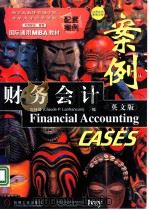
- 财务会计案例:英文版
- 1998年07月第1版
-
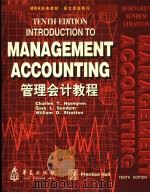
- 管理会计教程 英文版·第10版
- 1998 华夏出版社
-

- 会计学 英文版 第18版
- 1998 沈阳:东北财经大学出版社
-
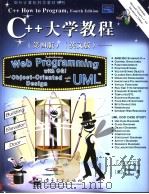
- C++大学教程 第4版 英文版
- 电子工业出版社
-
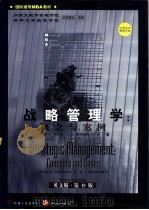
- 战略管理学 概念与案例 英文版·第10版
- 1998 北京:机械工业出版社
-
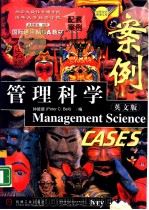
- 管理科学案例:英文版
- 1998 北京:机械工业出版社
-
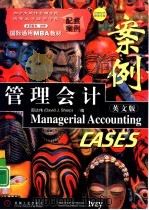
- 管理会计案例 英文版
- 1998 北京:机械工业出版社
-
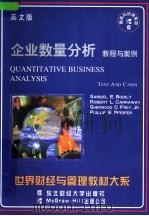
- 企业数量分析 教程与案例 英文版
- 1998 沈阳市:东北财经大学出版社;McGraw-Hill出版公司
-
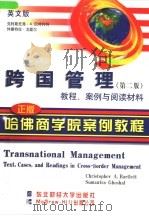
- 跨国管理 教程、案例与阅读材料 英文版·第2版
- 1998 沈阳:东北财经大学出版社;McGraw-Hill出版公司
-
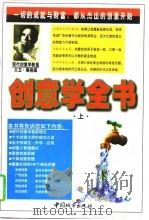
- 创意学全书 上
- 1997 北京:中国城市出版社
-

- 国际会计学 英文版·第4版
- 1998 北京:机械工业出版社
-

- 审计学 教程与案例 英文版
- 1998 沈阳:东北财经大学出版社
提示:百度云已更名为百度网盘(百度盘),天翼云盘、微盘下载地址……暂未提供。➥ PDF文字可复制化或转WORD

